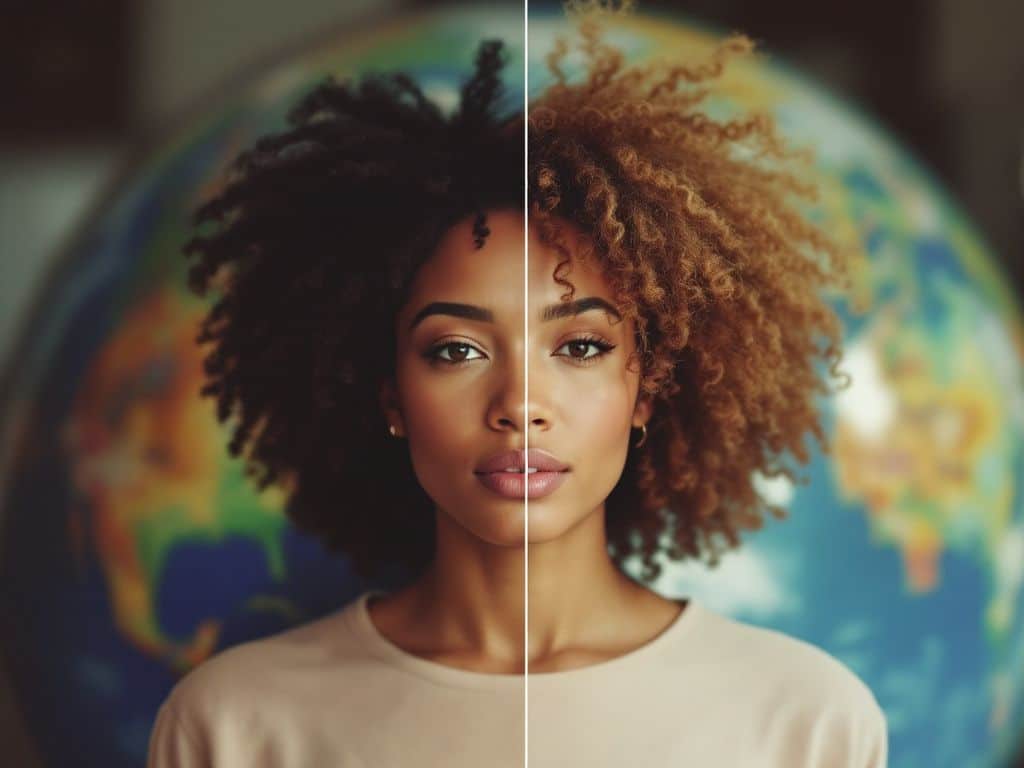
As we navigate an age where climate discussions have evolved from mere awareness to active mitigation strategies, understanding the nuanced interplay between the environment and everyday facets of life is paramount. One such area often overlooked is how climate affects the textures and health of our hair. Examining this interaction reveals important insights not only for personal care but also for broader environmental understanding. In this comprehensive guide, we’ll unravel the effects of climate on different hair textures, supported by substantial data and research.
The Environmental Nexus: Hair and Climate
Have you ever noticed how your hair misbehaves on humid days or perhaps becomes brittle during those sweltering summer afternoons? You’re not alone. The climate plays a pivotal role in determining hair health, influencing factors structurally and visually different across hair types.
Hair, composed mainly of keratin—a robust protein—is surprisingly sensitive to its external environment. Similar to how weather conditions impact flora and fauna, they significantly alter the physical properties of hair. Let’s delve deeper into the science underpinning this phenomenon.
Humidity and Hair: Understanding the Intricacies 🌧️
Humidity’s Chemistry
Humidity refers to the amount of moisture in the air, which interacts directly with the protein bonds in hair. Each hair strand contains three types of molecular bonds:
- Disulfide Bonds: Covalent and strong, critical for permanent hairstyle structures.
- Hydrogen Bonds: Weak and abundant, affected by water content, influencing flexibility and style.
- Salt Bonds: Moderate, also controlled by hair’s pH and moisture.
When humidity rises:

- Hydrogen Bonds re-form as moisture permeates the hair shaft, causing strands to swell and distort.
- Curly hair becomes curlier due to increased water interaction with the protein matrix.
- The once temporarily reshaped strands—straightened using heat, for example—revert to their natural pattern.
Technical Breakdown
Several studies have quantified humidity’s impact on hair:
A pivotal Japanese research analyzed 200 participants, demonstrating that cues like texture alterations and frizz, particularly in Type 3 (curly) and Type 4 (coily) hair, increase with humidity levels exceeding 60%. Corresponding studies in climates like Miami and Singapore indicated a direct correlation between elevated humidity and increased hair breakage in fine to medium textures, especially when routinely styled with heat.
Practical Tips for Managing Humidity:
- Condition Wisely: Invest in leave-in conditioners with silicone and protein treatments to reinforce disulfide and hydrogen bonds, acting as an external shield.
- Control the Humidity Indoors: Utilize tools like dehumidifiers as first aid against unnecessary hygroscopic interactions.
- Style Adjustments: Opt for protective styles in high humidity environments to limit total exposure.
UV Exposure and Hair Health: Sun’s Silent Effects ☀️
UV rays are often culprits of significant environmental damage, not confined merely to skin—but severely underrated concerning hair. The trifecta of UVA, UVB, and UVC rays initiate protein photo-degradation.

Impact of UVB and UVA Rays
- UVB: Directly damages the outer cuticle, weakening the hair shaft and causing color fading for artificially colored hair.
- UVA: Indirectly affects through oxidative stress, leading to brittleness and split ends.
Case Study: Industry Research
L’Oréal Research & Innovation reports systematic observations where hair treated with UV-protectant products exhibited up to a 20% decrease in protein degradation. Concurrent tests illustrated that wearing hats or using UV-enhancing sprays lowered these harmful effects on both exposure regions’ assessments and hair integrity scores.
Actionable Advice:
- Sunscreens for Hair: Choose hair care products with UV filters like benzophenone.
- Protective Measures: Incorporate hats or scarfs during peak UV hours to impede direct sunlight.
- Improve Hair Care Routine: Implement antioxidant-rich conditioners to counter free radicals generated by UVA exposure.
Weather Effects on Different Textures 🌪️
Varying climates introduce unique challenges pertinent to each hair texture: straight, wavy, curly, and coily.
Impact on Straight and Wavy Hair (Type 1 and 2)

- Winter Cold: Causes static due to dry, cold air robbing moisture, coupled with increased sebum production resulting in an oily appearance.
- Practical Solutions: Deploy anti-frizz serums and deep-cleaning shampoos formulated against residue build-up.
Impact on Curly and Coily Hair (Type 3 and 4)
- Heat Extremes: Cause intensive moisture loss demanding robust leave-in conditioning for recuperative hydration.
- Real-World Solutions: Utilize protective oil treatments; jojoba oil mimics natural sebum enriched with nutrients.
Industry Standards and Practices
According to experts, adaptation to diverse environmental conditions mandates adherence to comprehensive routines tailored for all hair textures. Some current best practices include:
- Quality Product Ingredients: Lean on natural additives like shea butter and aloe vera to invigorate and nourish under duress.
- Climate-oriented Products: Embrace formulations specifically designed for extremities—anti-humidity sprays, and cold-defense serums.
Conclusion
Environmental impacts on hair are multifaceted, intricate affairs interlinking variables indicative of broader ecological patterns. Recognizing these interactions lays the groundwork for enhanced personal care, aligning with sustainable practices contributing to environmental conservation.
The fusion of research, real-world data, and technological interventions equips us to better manage the inevitable reality of these weather effects on our daily lives. As we learn more about these dynamics, we can foster a harmonious relationship with our environment and elevate hair care to new, scientifically-informed heights. 🌍
Frequently Asked Questions
What are the benefits of using a hair mask in my hair care routine?
Using a hair mask can provide several benefits, including hydration, smoothing, strengthening, curl definition, heat protection, and damage repair. Hair masks infuse the hair with moisture, help coat the hair shaft to seal split ends, reduce breakage, and protect the hair from heat styling and environmental damage[1][4].
What ingredients should I look for in a hair mask?
Effective hair masks often include ingredients such as coconut oil, argan oil, shea butter, honey, avocado oil, green tea, and coconut water. These ingredients provide nourishment, moisturize, and protect the hair, offering benefits like softening, moisturizing, and protecting against damage[2][5].
How often should I use a hair mask in my routine?
You should use a hair mask whenever your hair feels dry, unmanageable, or in need of intense hydration. This can vary depending on your hair type and needs, but generally, using a hair mask once or twice a week can help maintain healthy and moisturized hair[1][4].
How do I apply a hair mask for the best results?
To apply a hair mask effectively, shampoo your hair first, then apply the mask, focusing especially on the ends where hair tends to be the most damaged. Leave the mask on for anywhere from 10 minutes to overnight, depending on the type of mask and your hair’s needs[1][4].
References


Leave a Reply